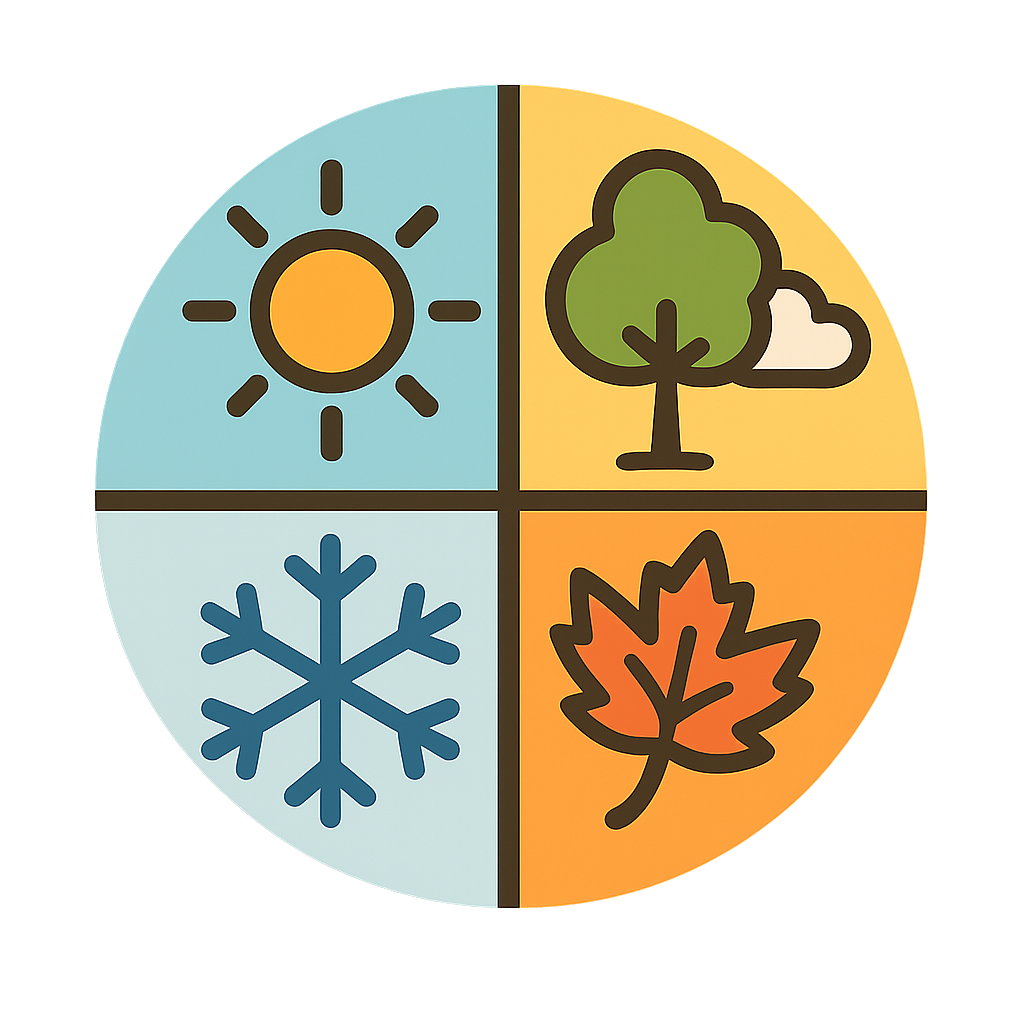The Earth's Great Rhythm
Have you ever felt the warm sun kiss your cheeks on a long, lazy afternoon. Or watched a single red leaf twirl down from a tree, dancing on the wind before landing softly on the grass. Have you tasted the sweet, surprising juice of the very first strawberry of the year, or stood so still on a quiet day that you could hear the gentle hiss of snowflakes landing all around you. Did you ever stop and wonder why you need a big, puffy coat one month, but just a pair of shorts the next. Why does the whole world seem to change its outfit, from bright green to fiery orange to sleepy white. It is a wonderful, spinning mystery, and I am the answer. I am the reason for all this beautiful change. I am the Earth’s great rhythm. I am the Seasons.
For thousands of years, people have watched me dance. Long before there were calendars on walls, people watched the Sun's journey across the sky. They noticed how it climbed higher on some days and stayed lower on others. In a place now called England, they built an incredible stone circle called Stonehenge, with giant rocks lined up perfectly to welcome my arrival on the longest and shortest days of the year. Watching me helped them know the perfect time to plant their seeds and the right moment to gather their harvest. They knew my rhythm was the key to their survival. Now, you might think that it gets cold because the Earth moves farther away from the Sun. That sounds like it makes sense, but it’s a little secret that many people get wrong. The real reason is much more interesting, and it’s all about a little lean. Your home, the Earth, doesn't stand up perfectly straight as it spins and travels around the Sun. It has a little lean, a permanent tilt. As the Earth makes its year-long trip around the Sun, this tilt means that sometimes the top half of the world, the Northern Hemisphere, is tilted toward the Sun. The Sun’s rays hit it more directly, like a flashlight shining straight at a wall. That's summer. At the same time, the bottom half, the Southern Hemisphere, is tilted away, getting weaker, slanted rays. That's their winter. Then, the Earth continues its journey, and the opposite happens. I have four special moments each year that mark my big changes. Around June 21st and December 21st are the solstices, my longest and shortest days. And around March 20th and September 22nd are the equinoxes, when day and night are almost exactly the same length. These are my turning points, when I switch from one part of my dance to the next.
My grand dance with the Earth and Sun isn't just happening far out in space; it’s happening right in your backyard. I’m the reason you can build a crunchy-snow fort in winter and splash in a cool ocean in summer. I’m the reason you can fly a kite on a breezy spring day and jump into a giant pile of crispy autumn leaves. Can you imagine a world without these changes. I even help decide what’s on your dinner plate, from summer corn on the cob to autumn pumpkin pie. I change the clothes you pull out of your closet and inspire so many of your favorite holidays. Around the world, people celebrate with harvest festivals when the crops are gathered in the fall, or with joyful parties to welcome the new flowers of spring. I give each part of the year its own special feeling, its own foods, and its own fun. So next time you feel a cool autumn breeze or the first warm sun of spring, remember me. I am a constant, beautiful reminder that everything moves in a cycle. After every long, cold winter, a bright, blooming spring is always waiting. I promise that change is a good thing, and there is always something new and hopeful just around the corner.
Reading Comprehension Questions
Click to see answer
